
by Michelle | Jan 25, 2024 | Being Well, Featured, Move Well, Uncategorized, Work Well
Intro to Behavior Change, Part 1
Every day we hear the results of another study, telling us what is making us unhealthy. Eat this, don’t eat that. Move like this, not like that. There are, of course, good reasons to become educated about making healthier choices. We are on an unsustainable track both for our own health and for the economic health of our nation. In all reality, our health care crisis – the skyrocketing cost to treat preventable, chronic disease – is a greater threat to our survival than global climate change. As with all things, though, we have made the solution far too complicated for the average person to comprehend.
Let’s get down to the fundamentals. First, we simply have to become more aware of our own habits. How do I feel when I eat this and don’t eat that? How do I feel when I walk up a flight of stairs? How much energy do I have? If the answers to these questions are not the ones you’d like, then it is probably time to start making some changes.
Change is hard. Crazy hard. It’s really inconvenient. That’s how we got into this mess in the first place. It is human nature to take the path of least resistance. It takes time and effort to change the way we live our lives. For most of us, this is where we end up – in a state of knowing we need to do something but not believing that we can really do anything about it. To be successful, we need to make the changes to our habits small, easy-to-adopt, and enjoyable.
Behavior Change 101, Part 2
Awareness. This is where it all starts. We have to stop and look within ourselves to even begin to understand what is and isn’t working. This goes for health and nutrition but also for relationships, self-esteem, work performance, you name it. What is the famous saying? The first step is admitting you have a problem.
You don’t have to become a Yogi (yoga instructor, not the bear) to become aware. You don’t have to take special classes (although that might help). You don’t have to change the kind of person you are (although you probably will in the end). You just need to be open to the idea of changing.
We see things more clearly when we take a step back and give them our undivided attention. Take a few moments each day to breathe. Just be. Relax. In doing so, the busyness of the world, the noise of our self-talk, the daily to do list, they all disappear and we are simply left with ourselves and the truth. Layers of thought, emotion, and even traumatic events are often responsible for the “dis-ease” that causes disease. Without going through this process, it may not matter what changes we make to our nutrition or exercise habits. Our bodies seek balance. This applies to our emotional state as well. When we are out of balance, there are a whole host of physiological processes that go off-line as well.
Unfortunately, the typical American lifestyle does not lend itself to mind-body balance. It can seem overwhelming to understand what is out of balance and what we need to do about it. This is where awareness is key. At some point, most of us have tried to determine how many calories, grams of protein, fats or carbohydrates or how many minutes of high or low intensity exercise we should be getting each day. And, statistics show that this hasn’t worked out so well for most of us . . . at all.
So, how do we identify and make the changes we need to make? Pay attention to your own body and mind. What you think and feel, what you read, and what you hear others say all provide clues if you are tuned in. Listen to that voice in your head, that gut instinct that kicks in and says, “Hey, that’s what I need to do. I can do that.” I call it the When-Harry-Met-Sally-Moment – “I’ll have what she’s having.” Pay attention to what inspires you and follow that thread.
Tips for Successful Behavior Change, Part 3
Why we want to make changes is almost as important as what we want to change. The “why” often determines our chances for success. If we are making a change for our spouse or boss, or as a quick fix (think high school reunion), we might not be as emotionally invested as we need to be successful over the long term. You need to have good reasons to make any lasting change. Maybe it is to be around to see your kids or grandkids grow up or maybe it is about improving your quality of life. Whatever it is, it needs to be meaningful to you.
Setting SMART goals is key to successful behavior change. SMART is an acronym for research-based characteristics that significantly increase the likelihood of reaching one’s goals. They should be:
- Specific
- Measurable
- Attainable
- Relevant
- Time-Bound
For example, if I want to walk 2 miles a day but am currently completely sedentary, I need to break down my goal into manageable pieces. I also need to be realistic. How far can I, and more importantly, will I, walk each day. Maybe it is just a daily walk to my mailbox for the first week. Then, I can walk to the end of the block, then 3 blocks, and so on until I have achieved my goal. It is important to set a time frame for each level of goal attainment. This can be daily or weekly. It needs to be short enough to generate immediate success but also long enough to form a new habit as a foundation for the next step and that usually takes about 8-10 weeks.
Work with your strengths and interests when approaching changes. If you like to cook, then it makes sense to find healthy recipes you would enjoy making. If you hate cooking, it will be important to simplify what nutrition changes you are making so that you can still be successful. It can be as simple as choosing the prepared veggie tray and a container of hummus from the grocery store. This principle is especially important when it comes to physical activity. If you enjoy being outdoors, consider walking or hiking. If you like people, music or dancing, you could join a group fitness class. If you want something more mindful, try Tai Chi, Qigong or Yoga. The key is to look for ways to integrate a positive, healthy change with your personality, interests and strengths.
One of the reasons people struggle with behavior change is because they have been unsuccessful in the past. Three common reasons for this are 1) Setting unrealistic goals 2) Giving up after the first setback, or 3) Taking on too many changes at once.
To avoid these, it is important to set a narrow list of ridiculously small goals. This allows us to celebrate mini victories which perpetuate future successes. BJ Fogg, a researcher at Stanford University, calls these “Tiny Habits.” He uses an example for someone who wants to develop the habit of flossing their teeth. He suggests flossing one tooth each night after brushing your teeth. Just one tooth. This is based on the fact that a 3 second action of flossing one tooth is perceived as much more doable than the 30 second action of flossing all of our teeth and, therefore, we are more likely to stick with and succeed at the development of this new habit. As sad as this example is, he is 100% right (and he has the research to back that up.) This says a lot about human nature and explains a lot when it comes to why behavior change is so difficult.
To summarize, there are some tricks to successful behavior change:
- Become aware of what you want to change and why
- Set SMART goals
- Make changes that fit your personality, strengths and values
- Start small (REALLY small) and build on your successes
Written by Michelle Jenck, M.Ed., Certified Behavior Change Coach
For more local health and wellness information, visit www.tillamookcountywellness.org or follow Tillamook County Wellness on Facebook and Instagram.

by Michelle | Jan 16, 2024 | Eat Well, Featured, Move Well, Work Well
Tillamook County Wellness was launched in 2016 as a “Year of Wellness” with a simple goal – to encourage people to make small changes to become healthier. After a successful kick-off year, the Wellness Advisory Committee decided to ride the wave of community support for this grassroots population health improvement initiative and set a ten-year goal to reduce the percentage of people in Tillamook County who were at risk for developing Type 2 Diabetes. This ambitious goal had one significant challenge. How would we track our efforts to determine if we were having an impact? We can’t measure what doesn’t happen. Or can we?
In 2016, the percentage of adults in Tillamook County living with a diagnosis of diabetes was 12%. In 2023, the same source for this data (County Health Rankings), reported Tillamook County rates at 8%. Another bright spot for comparison is that we began our journey with a health ranking in the bottom third of Oregon counties. Today we boast a #12 county health ranking status out of 35 ranked counties in the state. Anecdotally, we are making progress. More concretely, we have built more trusting relationships, established policies, programs and strengthened partnerships in ways that are making Tillamook County a healthier place to live, work, play, learn and age.
So, who is Tillamook County Wellness and what exactly are we doing to improve health and quality of life in Tillamook County? It’s all of us and it’s everything. This is what collective action looks like. It takes everyone thinking, working and living together intentionally in ways that promote health and well-being.
In 2023, 34 community and government organizations, businesses, schools, healthcare partners and many, many volunteers all worked together to move the dial on health. Grants were written and awarded for building a sustainable healthcare partner network, implementing a health literacy campaign and partnering to hold a bike rodeo where more than 30 bikes were given away to area families. Walking groups, led by volunteers, met weekly throughout the county. Hundreds of vegetable seeds were distributed so our local gardens can “Grow Well.” Free wellness classes were held in English & Spanish for everything from how to prevent and manage chronic diseases like type 2 diabetes to how to manage personal finances.
Upstream efforts to build more housing, increase the availability and affordability of childcare and expand education pathways for higher income-earning potential are just some examples of how partners are working to create the conditions for a healthier community. Changes to the built environment such as community walking paths, segments of the Salmonberry Trail and a bike pump track are other examples of work being done to make it easier for people to get and stay healthy. Area schools work with Food Roots to teach kids where their food comes from and how to cultivate and cook it. Nutritious recipes with easy-to-find, inexpensive ingredients are being shared and devoured based on the social media stats behind those shares.
The point here is that wellness is more than a number on the scale or a medical record. Wellness starts with people’s ability to have a safe place to live, healthy food to eat, an education that leads to a living wage job, a community that has adequate supports for mental health, addiction, and for families with loved ones experiencing disabilities or different abilities.
Often, when we think about the challenges that negatively impact community health, we wonder, “why isn’t someone doing something about this?” Working in community well-being for a decade, it is clear to me that much is being done and a lot of positive changes are resulting from those efforts. The organizations responsible for much of this work are often constrained by lack of funding, staff or volunteers. You can make a difference by making donations to your favorite charities, getting involved as a volunteer, and advocating for the good work within your family and peer circles. After all, giving back is good for your health.
Written By Michelle Jenck, M.Ed.,
To learn more, get involved and donate, visit www.tillamookcountywellness.org or email us at info@tillamookcountywellness.org.
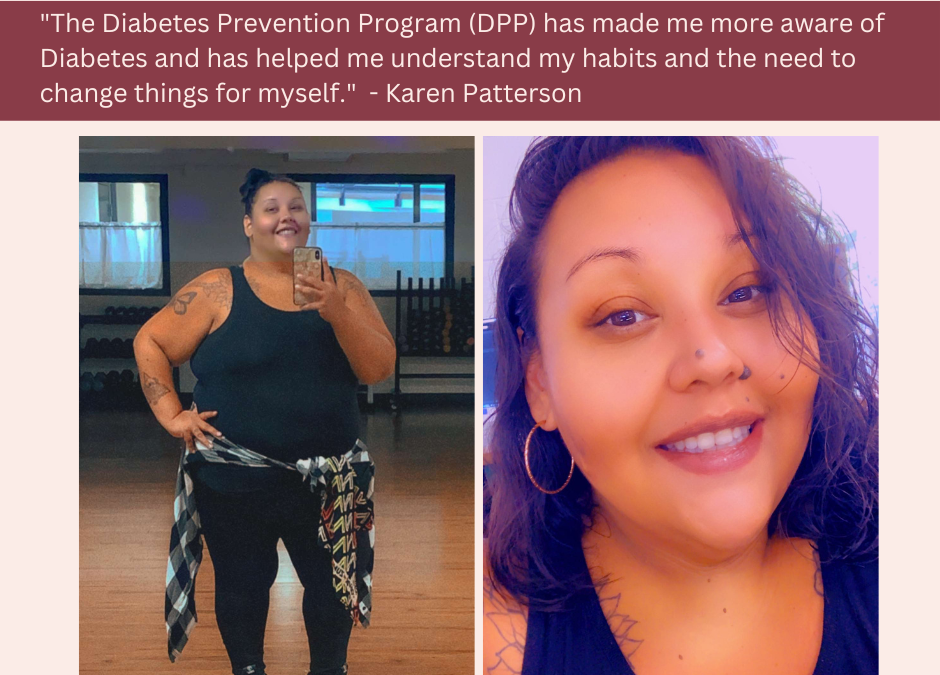
by Michelle | Nov 8, 2023 | Eat Well, Featured, Move Well
October was Emergency Preparedness Month. It was a reminder that we can be caught off guard at any moment and that negative consequences of the unexpected can be greatly reduced if we take advance action to prevent the worst from happening.
Our most recent emergency was the covid-19 pandemic. As we rebuild after that event, it is important to consider what we learned and to apply that knowledge to avoid further devasting outcomes. What we learned during the covid-19 pandemic is that individuals with chronic diseases like type 2 diabetes were at far greater risk of severe illness and death.
November is Diabetes Awareness Month. Type 2 Diabetes is occurring with far more frequency than earthquakes or hurricanes. We know what we need to do to prepare for and prevent its onset but we are not taking action in time to prevent it. We can screen for both type 2 diabetes and prediabetes. If we identify the condition at the prediabetes stage, there is much a person can do to reduce the likelihood of developing type 2 diabetes.
A simple blood test conducted by your medical provider is all that is needed. An A1C between 5.7 and 6.4 indicates a person is prediabetic. It is at this stage the condition is considered reversible. This blood test is part of an annual exam or well check. We owe it to ourselves and our loved ones to go in for those yearly checkups. Just like we take our cars in to have the oil changed, tires rotated and balanced, we need to have the same level of care and concern to keep our bodies in good working order. It’s preventive maintenance and it saves us a lot of money and frustration down the road. Just like avoiding maintenance of our car or home, the minor inconvenience of a doctor’s visit is minimal compared to the costs of delayed maintenance.
If we discover we are in that prediabetes range, the course of action is simple but not always easy. Monitoring lifestyle habits like sleep, water intake, nutrition, and physical activity and making small changes (or perhaps large changes) will significantly reduce risk for developing type 2 diabetes. These changes will also reduce risk for heart disease, stroke and cancer. Most importantly, making these changes improves our mood, energy and overall quality of life. Once we begin feeling better, we become more motivated to stick with our new habits.
Read below a recent interview with Karen Patterson who is currently taking National DPP, she tells us how she lost 50 pounds in the first 16 weeks!
Karen Patterson, 36 years old, two daughters, lived in PNW her whole life, moved to the Oregon Coast last year and is getting started on a health and wellness journey. These are her thoughts on our program.
“The Diabetes Prevention Program (DPP) has made me more aware of Diabetes and has helped me understand my habits and the need to change things for myself.”
“I liked learning from everybody else that was pre-diabetic in class. I thought it was a good way of getting to know people in your community. Everybody struggles, and on the days where I felt like I was struggling the most, and felt bad about it, I didn’t feel alone because it wasn’t just me in class (DPP). I loved getting to know everyone!”
“I loved meeting week after week, and the material was great. The fitness bands and the calorie book were fun things to get out of class. I would definitely recommend this class (DPP) because I think it is a step in getting to know what could be in your future if you are somebody who is pre-diabetic. I think it’s great for anyone to have the opportunity to do it (DPP). I like working out now, and I like eating healthier. It was a great class, I loved it!”
If making these changes feels overwhelming, consider joining the National Diabetes Prevention Program at the YMCA. If you’d like more information contact Kelly Benson at 503-842-9622 ext. 111 or kbenson@tillamookymca.org.
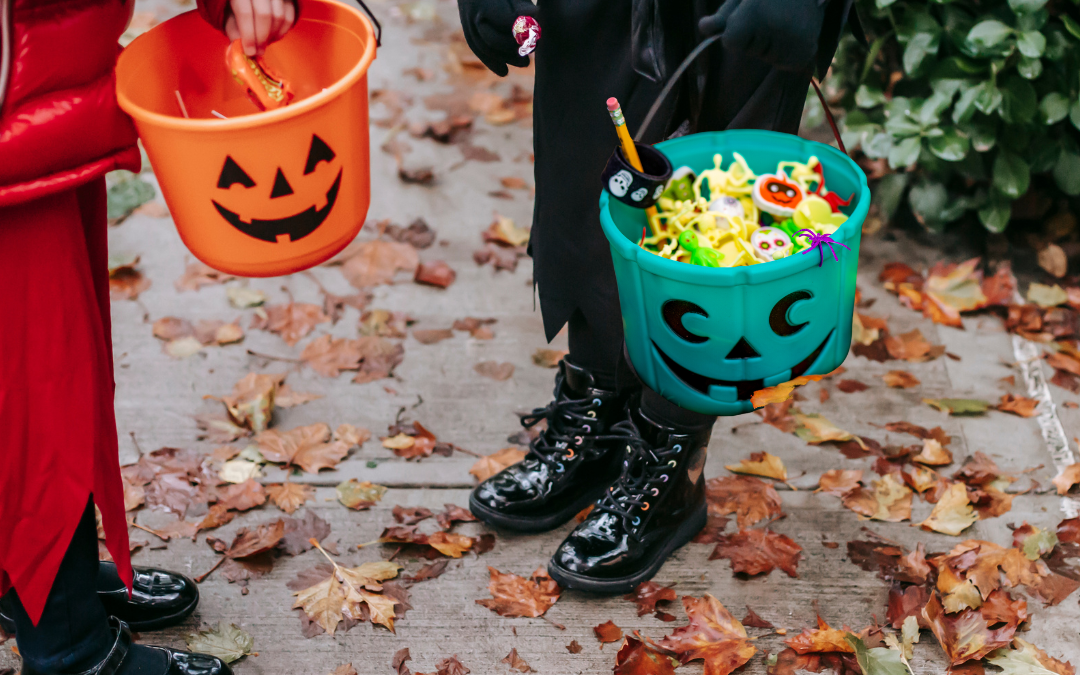
by Shelby | Oct 31, 2023 | Eat Well, Featured, Move Well
On this Hallow’s Eve, whether your night has many frights and spooky lights in store or will be filled with the warm glow of Jack-o’-lanterns as you answer the door to your festive visitors, we combined tips from the CDC and Dana Zia, the Tillamook County Pioneer’s food writer, to help provide you with some tricks in your trick or treat tonight.
Treats:
Not all treats are created equal; there may be a considerable amount of sugar in the treats your goblins or ghosts (and even yourself) consume. Dana Zia shared with us that an estimated 2 billion dollars is spent on Halloween candy each year. For context she adds, “that is enough for 20,000 students to attend a decent college for 4 years, or to feed 303,030 kids in Ghana, Africa for a year!” Eating a nutritious meal, drinking plenty of water (bring water with you) and enjoying the candy in moderation is a way to offset the anticipated sugar load. It is also important to inspect the candy’s packaging before eating, and only eat factory-wrapped treats. If you have any doubt about the safety of a treat, throw it out.
Halloween can be extra tricky for trick-or-treaters with food allergies. Just as with inspecting the candy before eating, if you have an allergy, always read the label on the treat, and throw it out if the label is missing. If an epinephrine auto-injector is prescribed to you or your spooky trick or treater, it is a good idea to carry it with you. If you see “teal pumpkins” with a trick-or-treater, this is a good indication that that superhero or princess has a food allergy. The Teal Pumpkin project was started by Food Allergy Research and Education (FARE) to start a worldwide movement to make Halloween more inclusive and safer for all by providing non-food treats, such as stickers, school supplies, and small toys, to kids with allergies, who can be more easily identified by carrying “teal pumpkins.”
Tricks:
The CDC shares the frightening fact that children, on average, are 2x more likely to be hit by a car and killed on Halloween than on any other day of the year. It is important to be prepared with safety in mind and keep these tricks up your sleeve before going out on Hallow’s eve.
Make yourself more visible to traffic by adding reflective tape to costumes and candy bags and by carrying a flashlight (check the batteries before heading out!). Trick-or-treating is safer in a group, with at least one responsible adult. Stick to the sidewalks when possible, walk, do not run between houses, and stay on the far edge of the road on the side that is facing traffic if walking on the road cannot be avoided. ALWAYS look both ways before crossing the street at a crosswalk or intersection. It is a good idea for each member who is trick or treating to carry emergency contact information in case lost or separated from caretakers or group.
We wish you all safe and happy hauntings tonight. For more information on Halloween safety from the CDC please visit CDC.org and search for “Halloween safety.” For more wellness information, visit our website at https://tillamookcountywellness.org/ and follow Tillamook County Wellness on social media.
Resources: Dana Zia’s from 2016 (https://tillamookcountywellness.org/scary-things-food-halloween/) and CDC blog https://blogs.cdc.gov/publichealthmatters/2019/10/halloweentips/
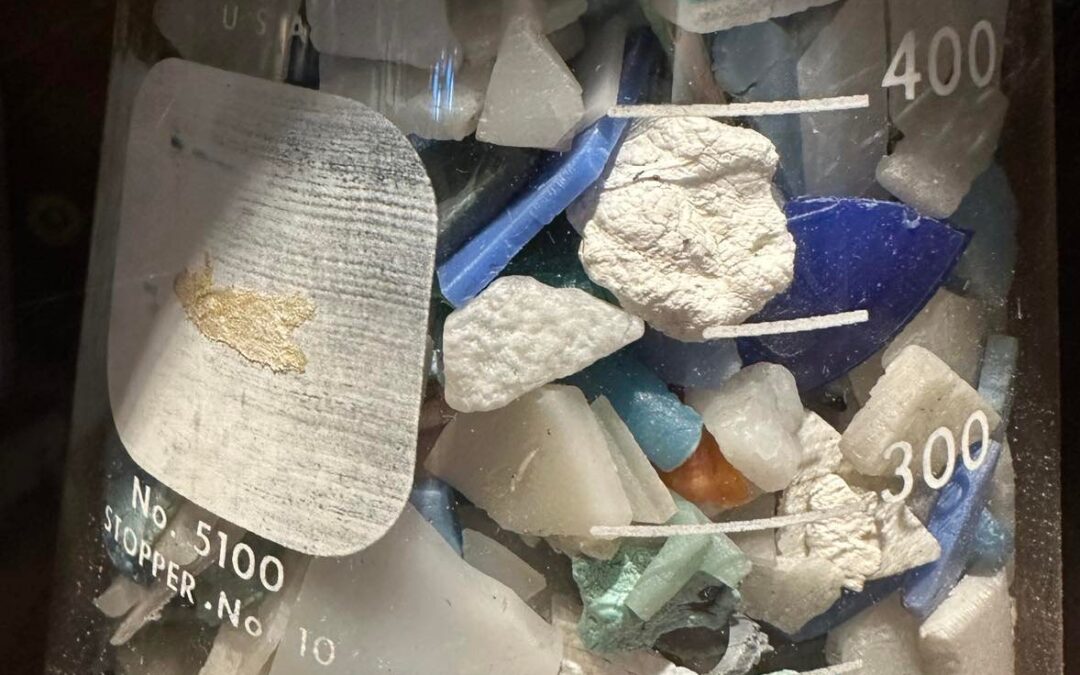
by Guest | Jul 25, 2023 | Being Well, Featured, Move Well
Photo Credit: Lenna Coy
AUTHOR: Leanna Coy, FNP-C, Family Nurse Practitioner and Health Content Writer
How microplastics are impacting you
Microplastics have become pervasive in the environment. They are found in water, air, and the food supply. Similar to bygone eras such as the ice age, bronze age, and industrial age, microplastics are so widespread that scientists labeled the current time as the “plasticine era” which began in 1945 and continues today. By identifying a plasticine era, scientists have determined the impact of microplastics on the environment is enough to cause geological change to the planet. In Tillamook County, we are not immune to the impact of microplastics. Despite the relatively pristine nature of our beaches, microplastics are everywhere in the sand.
What are microplastics
Microplastics are solid man-made plastic or fiber particles with irregular shapes and sizes measuring less than 5 mm, about the width of a pencil eraser. There are two categories of microplastics, primary and secondary. Primary microplastics are manufactured to be small.
These include:
- Microbeads – small particles added to personal care products such as face wash, nail polish, makeup, and toothpaste.
- Nurdles – small pellets of plastics in the raw material form used to manufacture plastic products.
Secondary microplastics are small pieces broken down from larger plastic pieces over time. This breakdown occurs with exposure to the environment (sun, wind, water, heat), transforming and breaking the plastic into pieces that are hard to identify as plastic. When seen on the beach, these pieces can easily be mistaken for sand, small rocks, shells, or other materials. Other secondary microplastics come from fibers such as those used in clothing or fishing gear.
Why microplastics are unhealthy for people
Scientists are still learning about the negative effects from microplastics in the environment on the human body. Researchers determined the average person consumes an estimated 80 g of microplastics in the food they eat. Microplastics in the food comes from the runoff of water treatment plants used to help fertilize farms employed in food production. Microplastics are also now extensively found in the fish and shellfish we consume. Research is ongoing about the effect of microplastics on humans. What is known is that many of the ingredients that make up the plastics are considered toxic. Two common issues are Bisphenol-A (BPA) and heavy metals. Bisphenol-A (BPA) has been in use since the 1950s. It is a common product in the packaging of food and the manufacturing of water bottles. Scientists found BPA affects the endocrine system, which regulates hormones in the body. Several diseases and conditions are associated with substances that negatively affect the endocrine system, including:
- Hormone-related cancers (breast, testicular, prostate)
- Infertility
- Diabetes
- Obesity
- Asthma
- Autism spectrum disorders
In 2012 the Food and Drug Administration banned the use of BPAs in baby bottles and sippy cups. In 2013 BPAs were also banned from use in infant formula packaging. Thirteen states have banned BPA products. Heavy metals serve several purposes when added to plastics. Heavy metals such as silver and copper create an antimicrobial effect. Fillers such as barium sulfate and calcium carbonate increase the stiffness or hardness of plastic. Lead, cadmium, and chromium have all been used as dyes for plastics. Bromine and chlorine in plastics have a flame-retardant effect. The concentration of metals in plastic depends on the final product. Heavy metals are known carcinogens, meaning they cause cancer. Cancers with known associations to heavy metals include:
- Lung cancer
- Breast cancer
- Bladder cancer
- Liver cancer
- Colon cancer
- Kidney cancer
In addition to these known toxic substances, microplastics are believed to contribute to antibiotic resistance. Bacteria that grow and thrive specifically on plastics are resistant to the heavy metals in the plastic. These bacteria are interacting with other bacteria in the environment sharing this resistance. To put it simply, plastic-thriving bacteria are teaching other bacteria howto create a shield to protect themselves from antibiotics.
How to do your part
When walking on the beach you likely see some microplastics due to their bright, unnatural colors. Other pieces you may not recognize due to their size or color. According to Oregon State University, preventing the flow of microplastics into the ocean will have the greatest impact on the environment. So while it may seem like a daunting or strange task to “clean the sand”, this is exactly what will help get microplastics out of the environment. Do your part.
- Join or organize a beach cleanup such as those hosted by SOLV
- Use reusable alternatives to plastic
- Avoid products with microbeads
- Choose clothing with natural fibers
Other wellness questions? Email us at info@tillamookcountywellness.org. For more local health and wellness information, visit www.tillamookcountywellness.org or follow Tillamook County Wellness on Facebook and Instagram.
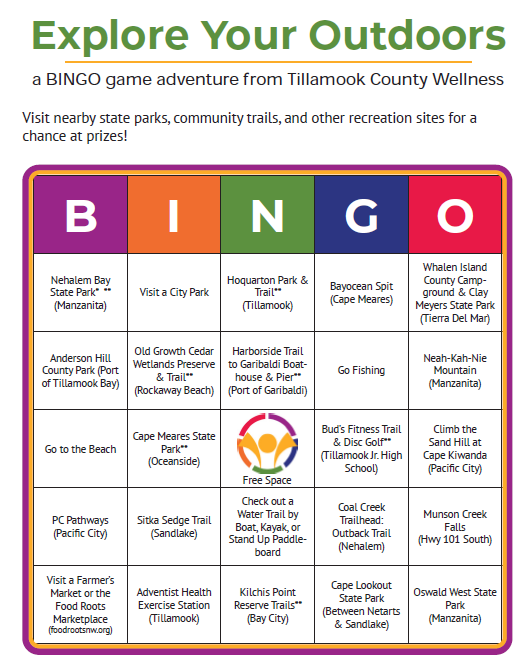
by Guest | Jun 5, 2023 | Move Well
Downlaod a bingo card by clicking on the image.
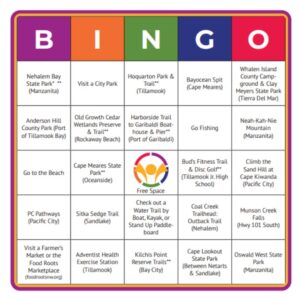
This is the summer of exploring our own backyards, and how lucky are we to live in a place with an overabundance of outdoor recreation opportunities? Looking for some new “favorite” places to hike or fish? Here’s an incentive to discover Tillamook County’s treasures –Visit nearby state parks, community trails, and other recreation sites for a chance at prizes!
Tillamook County Wellness is re-launching its “Explore Your Outdoors” BINGO game to help you get outdoors and explore city, county and state parks, beaches, community trails, and other recreation sites. Some places are well-known and popular; others are just waiting to be explored. By you!
Adventure awaits from north to south and everywhere in between at Nehalem Bay State Park, to trails crisscrossing Neah-Kah-Nie Mountain, to climbing the sand hill at Cape Kiwanda and checking out the PC Pathways. There’s the Rockaway Beach Old Growth Cedar Preserve which has a ½ mile boardwalk that’s an easy stroll (accessible for wheelchairs) to one of Oregon’s largest trees, and The Harborside Trail in Garibaldi provides views from the Boat Basin to never-ending bay views of the Historic U.S. Coast Guard Boathouse. Travel south and get yet another view of Tillamook Bay from the trails at Kilchis Point Reserve near Bay City.
The City of Tillamook has the Hoquarton Park Trail, and the unique Bud’s Fitness Trail with exercise stations and then you could always explore one of Tillamook County’s many water trails for a peaceful new perspective. There are city parks galore, miles of beaches – ocean beaches, bayside beaches and riverbanks – and so much more.
Check out a local Farmers Market, go fishing, find a new beach, or visit any of the other locations and you’ll be able to check off a square. Just like Bingo, fill in a line of adventures and enter for a chance to win great prizes. Go for a full blackout and the ultimate Tillamook County adventurers can enter to win a Kayak trip for eight, donated by Kayak Tillamook!
Explore Your Outdoors adventure begins June 1 and runs through July 31, 2023. You can download the bingo card online from our website. Bingo cards have also been sent home with students from the local school districts across the county. Prizes are drawn weekly. Enter yourself for a chance to win once you have a “bingo” online at tillamookcountywellness.org/ move-well/great-places-to-get-moving or scan the QR code on the card.
Happy exploring!
Other wellness questions? Email us at info@tillamookcountywellness.org. For more local health and wellness information, visit www.tillamookcountywellness.org or follow Tillamook County Wellness on Facebook and Instagram.







